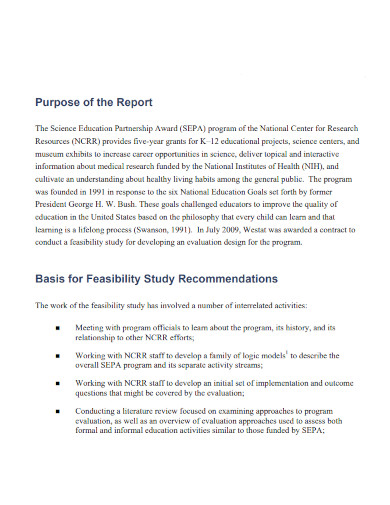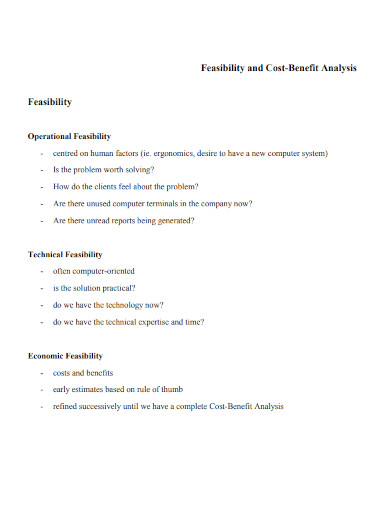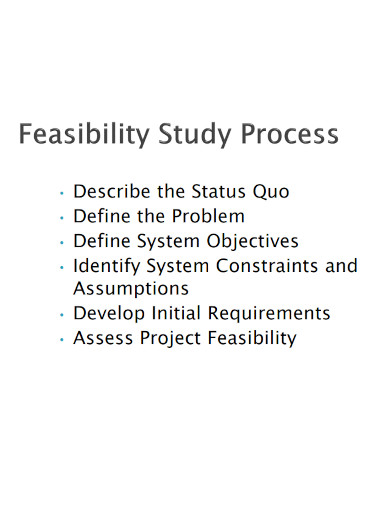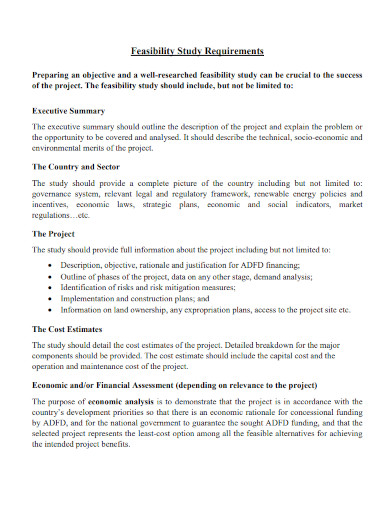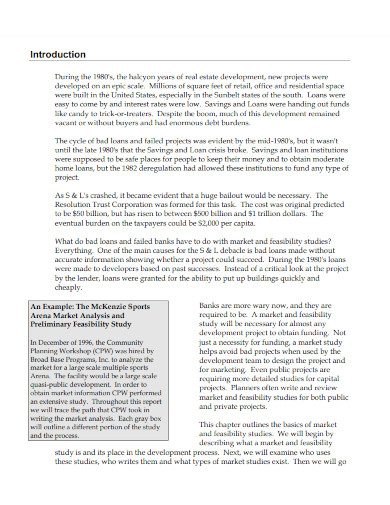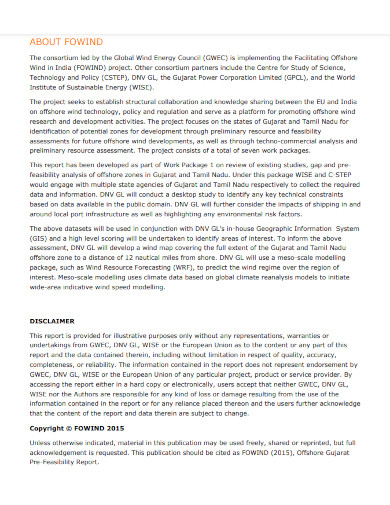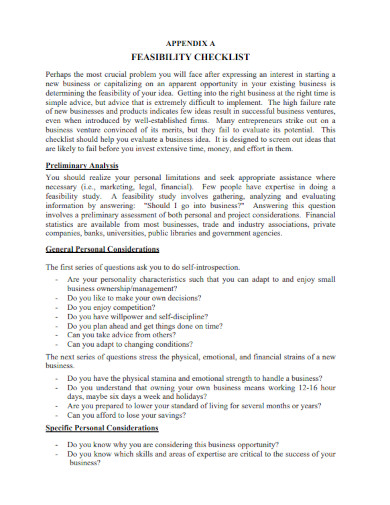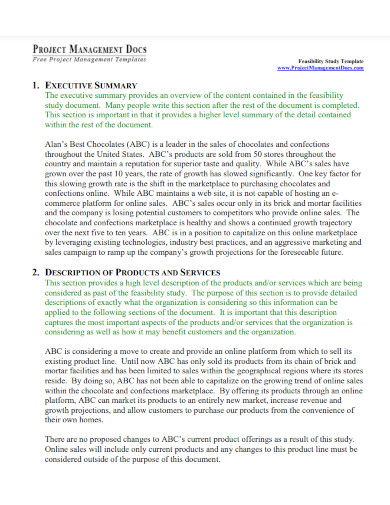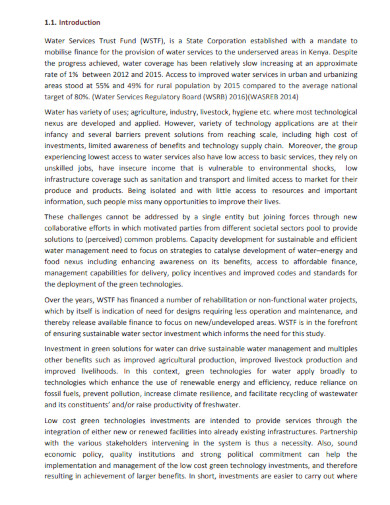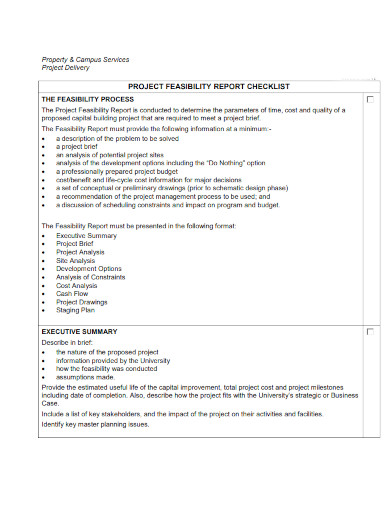Establishing a structured business plan as a part of a company’s project management is one of the first steps in determining if a project proposal is worth the take or not for their business. With a feasibility study or feasibility analysis, you can perform a quality assessment and practicality analysis of a proposed project plan or process which can be done by assessing technical, legal, economic, operational, and time feasibility elements.
10+ Feasibility Study Samples
1. Feasibility Study Report
2. Feasibility and Cost-Benefit Analysis
3. Feasibility Studies Presentation
4. Feasibility Study Requirements
5. Market Feasibility Study
6. Draft Feasibility Study Report
7. Pre Feasibility Study
8. Feasibility Study Checklist
9. Feasibility Study Template
10. Pre-Feasibility Report Template
11. Project Feasibility Study Checklist
What is a Feasibility Study?
A feasibility study is a method created to determine whether a project proposal is actionable by analyzing the practicality of the proposed project. This is a part of the initial design phase of a project which is done to objectively identify the strengths and weaknesses of the proposed project or an existing company. It can also be used to determine and analyze the opportunities and threats that are present in the natural environment, the possibility of success, and the resources necessary to complete the project.
How to Write a Feasibility Study?
One of the most effective strategies to ensure the success of your newly built small business or project is to perform a feasibility study. It enables you to review the important factors and preparations that are necessary to make a feasibility study which eventually contributes to the success of your business project. This study also reveals the return on investment, the risks it involves, ways of reducing risks, and determining whether a company will be able to complete a project within the scheduled time frame or not.
Step 1: Provide a Description of the Project
Providing an accurate description of your project is one of the parts of a feasibility study where you should highlight the purposes of the project as well as the main elements that influence its success.
Step 2: Provide an Outline of the Potential Solutions
You can communicate with your team to make an outline of the potential solutions that the project will deliver. This will enable you to determine which solutions bring the most benefits. List the rules that enable you and your team to effectively analyze these solutions such as the potential for revenue, enhanced productivity, developed communication plan, and more.
Step 3: Determine the Most Feasible Solution
After communicating with your team, deliver a statement about the solutions you will use as your guide to complete your project. Include an explanation of the reasons why you want to accomplish these solutions more than the other available options.
Step 4: Write a Conclusion Statement
Writing a closing statement or conclusion statement is the last step in making a feasibility study. This will enable you to efficiently summarize your main points. In this section, you can include the description of your project, your reason for starting it, the solutions you want to achieve, and an explanation of the importance of these solutions.
FAQs
What are the elements included in a feasibility study?
A feasibility study includes key elements which you have to consider when making your own such as the title page, table of contents, executive summary, market feasibility, technical feasibility, organizational feasibility, conclusion, and appendix and reference pages.
What information should be included in a feasibility study report?
A feasibility study report compiles the findings of your project feasibility analysis which include the executive summary, description of the product or service, technology considerations, product or service marketplace, marketing strategy, organization or staffing management, schedule management, financial projections, and findings and recommendations.
What are the types of feasibility studies?
The types of feasibility studies are technical feasibility, economic feasibility, legal feasibility, operational feasibility, and time feasibility.
A feasibility study refers to the assessment of the functionality or usefulness of a project plan or process. This is done by analyzing the different types of feasibility studies which can be performed by project managers during a certain point in their project management life cycle. It also helps in conducting the cost-benefit analysis of the project which also determines the areas of strengths and weaknesses of a company.
Related Posts
FREE 5+ Investment Feasibility Report Samples in PDF
FREE 10+ Project Feasibility Report Samples in PDF
FREE 13+ Sample Feasibility Reports in MS Word PDF | Google ...
FREE 8+ Product Feasibility Report Samples [ Project, Financial ...
FREE 4+ Short Feasibility Report Samples in PDF DOC
FREE 10+ Feasibility Analysis Samples [ Entrepreneurship ...
FREE 8+ Sample Technical Analysis Templates in PDF MS Word
FREE 10+ Industry and Market Analysis Samples [ Feasibility, Fresh ...
FREE 3+ New Food Product Proposal Samples in PDF MS Word ...
FREE 10+ Recommendation Report Samples [ Business, Internship ...
FREE 43+ Report Examples in MS Word PDF | Google Docs
FREE 10+ Buyer Persona Samples in PDF MS Word
What Is an Analysis? [ Importance, Tips ]
FREE 3+ Retail Store Project Plan Samples in MS Word Google ...
What Is Behavior Analysis? [ Branches, Principles, Tips ]

